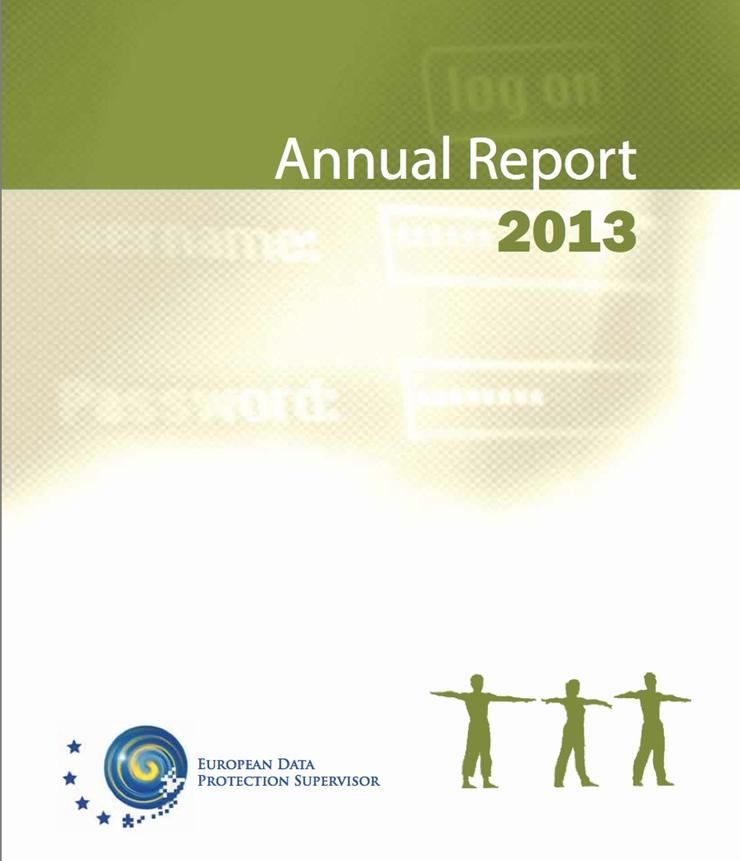Europäischer Datenschutzbeauftragter veröffentlicht Jahresbericht 2013
Der europäische Datenschutzbeauftragte hat seinen Jahresbericht 2013 veröffentlicht. Der gesamte Jahresbericht liegt in englischer Sprache vor (PDF). Auf deutsch ist eine Zusammenfassung der wesentlichen Ergebnisse erhältlich: EDPS, Jahresbericht 2013 – Zusammenfassung (PDF)
Ob sich der Blick in den Jahresbericht lohnt, hängt von Ihren Interessen ab. Zur Orientierung finden Sie hier die Überschriften aus dem Inhaltsverzeichnis:
Contents:
1. 2013 HIGHLIGHTS
1.1. General overview of 2013
1.2. Strategy 2013-2014
2. SUPERVISION AND ENFORCEMENT
2.1. Introduction
2.2. Data Protection Officers
2.3. Prior checks
2.3.1. Legal base
2.3.2. Procedure
2.3.3. Main issues in prior checks
2.3.4. Notifications withdrawn or not subject to prior checking
2.3.5. Follow-up of prior checking Opinions
2.3.6. Conclusions
2.4. Complaints
2.4.1. The EDPS mandate
2.4.2. Procedure for handling of complaints
2.4.3. Confidentiality guaranteed to the complainants
2.4.4. Complaints dealt with in 2013
2.5. Monitoring compliance
2.5.1. General monitoring and reporting 2013 Survey
2.5.2. Visits
2.5.3. Inspections
2.6. Consultations on administrative measures
2.6.1. Consultations under Articles 28.1 and 46(d)
2.7. Data protection guidance
2.7.1. Thematic Guidelines
2.7.2. Training and workshops
2.7.3. DPO Corner and other tools
3. CONSULTATION
3.1. Introduction: overview of the year and main trends
3.2. Policy framework and priorities
3.2.1. Implementation of consultation policy
3.2.2. Results of 2013
3.3. Review of the EU Data Protection Framework
3.4. Area of Freedom, Security and Justice and international cooperation
3.4.1. Strengthening law enforcement cooperation in the EU:
the European Information Exchange Model
3.4.2. Europol
3.4.3. EU Cyber security strategy
3.4.4. Smart borders
3.4.5. EU-Canada PNR
3.5. Internal Market including financial data
3.5.1. European Company Law and corporate governance
3.5.2. Regulation on the market surveillance of products
3.5.3. Payment account fees
3.5.4. Anti-money laundering
3.5.5. Sale of counterfeit goods via the Internet
3.5.6. Trade mark protection
3.5.7. Electronic invoicing in Public Procurement
3.5.8. Payments in the Internal Market
3.6. Digital Agenda and technology
3.6.1. Radio equipment
3.6.2. The Digital Agenda for Europe – Driving European growth digitally
3.6.3. Preparing for a Fully Converged Audio visual World: Growth, Creation and Values
3.6.4. European Single Market for electronic communications
3.7. Public health and consumer affairs
3.7.1. Drug precursors and third countries
3.7.2. Medical devices
3.7.3. eHealth Action Plan
3.7.4. Drug precursors and Russia
3.7.5. Prices of medicinal products for human use
3.8. Publication of personal information
3.8.1. Insolvency proceedings Regulation
3.9. Transport
3.9.1. Occurrence reporting in civil aviation
3.9.2. Intelligent transport
3.9.3. eCall
3.10. Other issues
3.10.1. Automatic exchanges of tax information
3.11. EDPS access to documents policy
3.12. Court matters
3.13. Priorities in 2014
4. COOPERATION
4.1. Article 29 Working Party
4.2. Coordinated supervision
4.2.1. EURODAC
4.2.2. VIS
4.2.3. CIS
4.2.3. Schengen Information system
4.3. European conference
4.4. International conference
4.5. Other international cooperation
4.5.1. Council of Europe
4.5.2. OECD
4.5.3. APEC
4.5.4. Association Francophone
4.5.5. The Berlin Group
5. MONITORING TECHNOLOGY
5.1. Technological development and data protection
5.2. Internet security and surveillance
5.2.1. Cryptographic Primitives
5.2.2. Protocols and Architecture
5.2.3. Implementation
5.2.4. Deployment
5.2.5. Anonymisation
5.2.6. Tracking
5.2.7. The Internet of Things
5.3. Biometrics
5.3.1. Personal genomics
5.3.2. Facial recognition
5.4. Borders
5.5. Drones
6. INFORMATION AND COMMUNICATION
6.1. Introduction
6.2. Communication features
6.2.1. Key audiences and target groups
6.2.2. Language policy
6.3. Media relations
6.3.1. Press releases
6.3.2. Press interviews
6.3.3. Press conferences
6.3.4. Media enquiries
6.4. Requests for information and advice
6.5. Study visits
6.6. Online information tools
6.6.1. Website
6.6.2. Newsletter
6.6.3. Twitter
6.6.4. LinkedIn
6.7. Publications
6.7.1. Annual Report
6.7.2. Thematic publications
6.8. Awareness-raising events
6.8.1. Data Protection Day 2013
6.8.2. EU Open Day 2013
7. ADMINISTRATION, BUDGET AND STAFF
7.1. Introduction
7.2. Budget, finance and procurement
7.2.1. Budget
7.2.2. Finance
7.2.3. Procurement
7.3. Human resources
7.3.1. Recruitment
7.3.2. Professionalising the HR function
7.3.3. Traineeship programme
7.3.4. Programme for seconded national experts
7.3.5. Organisation chart
7.3.6. Working conditions
7.3.7. Learning and development
7.3.8. Social activities and family matters
7.4. Control functions
7.4.1. Internal control
7.4.2. Internal audit
7.4.3. External audit
7.5. Infrastructure
7.6. Administrative environment
7.6.1. Administrative assistance and inter-institutional cooperation
7.6.2. Document management
8. EDPS DATA PROTECTION OFFICER
8.1. The DPO at the EDPS
8.2. The Register of processing operations
8.3. EDPS 2013 Survey on the status of DPOs
8.4. Information and raising awareness
9. MAIN OBJECTIVES FOR 2014
9.1. Supervision and enforcement
9.2. Policy and consultation
9.3. Cooperation
9.4. IT Policy
9.5. Other fields
Annex A — Legal framework
Annex B — Extract from Regulation (EC) No 45/2001
Annex C — List of abbreviations
Annex D — List of Data Protection Officers
Annex E — List of prior check and non-prior check opinions
Annex F — List of opinions and formal comments on legislative proposals
Annex G — Speeches by the Supervisor and Assistant Supervisor in 2013
Annex H — Composition of EDPS Secretariat

